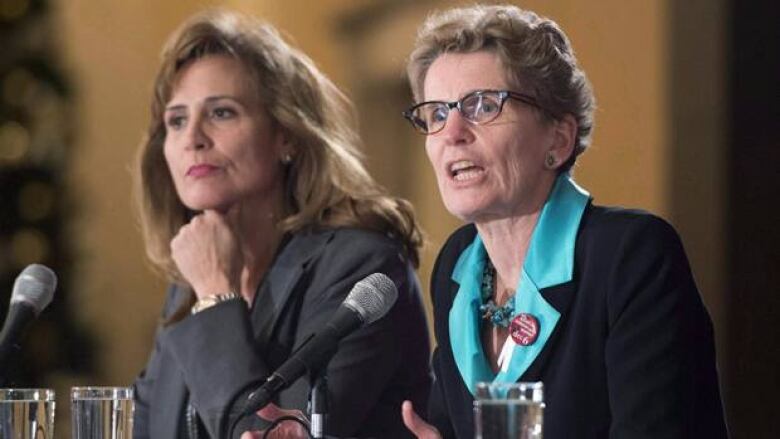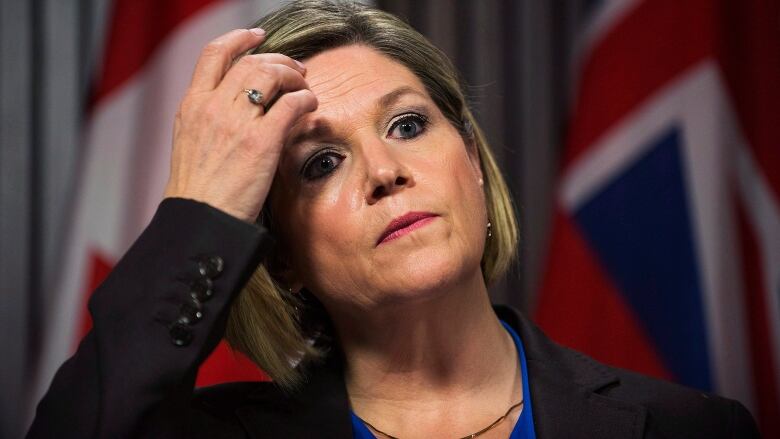Cabinet doors no longer locked for women at Queen's Park

Tomorrow afternoon, Kathleen Wynne will unveil the makeup of her cabinet: a mix of old and new, women and menall important decisions for Ontarios first elected female premier who is openly gay.
It will be history in the making and represents a huge change for the province and for the Legislature with 38 women elected on June 12in the provinces 107 ridings. And, for the first time, a partys caucus will have more women than men: The NDP elected 10 men but 11 women.
Change began in the 1980s
As a Queens Park reporter, I have watched that change happen, beginning in the 1980s.
How well I remember that Wednesday morning when then education minister Bette Stephenson arrived for a cabinet meeting only to find the door leading to the cabinet room locked. But with Dr. Stephenson shouting, Who locked this door? It certainly didnt stay locked for long.
In some ways, I think that locked door was a metaphor for women at Queens Park.
In those days, Ontario elected 125 MPPs. But of that number, only six were femalea group that included Stephenson and then Liberal MPP Sheila Copps. It was very much an old boys club.
In fact, in my unpublished master's thesis (The Majoritys Minority) for Carleton University, Copps told me she was often taunted by Conservative backbenchers with cut-outs of the Toronto Sun's Sunshine Girl and hand-written notes about the size of certain body parts and how they compared to hers.
She was infuriated by that. But it also steeled her to ask even tougher questions of Conservative cabinet ministers.
Fast forward to the present day and some of the treatment Andrea Horwath received from some Liberal cabinet ministers after assuming the leadership of the NDP.
The interjections and asides during question period were often sexist and demeaning of a woman who was, after all, the leader of a political party. But even if she hadnt been, they were unacceptable and women in the McGuinty cabinet Kathleen Wynne and Deb Matthews to name just two knew it had to stop. So they approached McGuinty and told him that. And the tone did change.
What has also changed over time for women in provincial politics is their involvement in the process.
Women often left on the sidelines, pushed toward support roles
When I began covering Queens Park, it was not uncommon to hear women complain that while they wanted to run, they were often told that they were really needed in the backrooms of campaigns, answering the telephone and making coffee and sandwiches.
Then there was something of an awakening and women did run, though in many cases this was just to fill out a quota in ridings where they had no chance of winning.
Even when they did run, there remained obstacles. In the 1995 provincial election, then Liberal leader Lyn McLeod Ontarios first female party leader struggled against the NDPs Bob Rae and Conservative Mike Harris.
The campaign started well but the wheels on the bus quickly fell off. Adding to McLeods woes was a decision by some Liberal candidates to tell campaign headquarters not to bother to include their riding on the leaders travel plan.
At the time, people close to McLeod said there were some Liberals who didnt want to admit they "reported to a woman an attitude that might have been expected in 1895, not 1995.
How much that contributed to the Liberals' downfall remains an open question. But it certainly did not help, along with a series of policy gaffes and flip-flops, high-powered Tory TV ads and a drift to the right by voters.
By the time Dalton McGuinty took over the partys leadership, powerful women had run and won and their numbers were on the rise. But the mostly male Legislature still had its share of challenges for women.
Pupatello's punch made her a target
Windsors Sandra Pupatello took on prominent critic roles and on a daily basis scored some political points at the then Conservative governments expense. And that made her a particular target for Conservatives.
By the time Liberals met in Toronto in early 2013 to pick a successor to McGuinty, Pupatello who sat out the 2011 election quickly emerged as the candidate to beat. Her take-no-prisoners style was something many Liberals thought was necessary to follow McGuinty.
But Kathleen Wynne and others wanted a more studied approach in their new leader, someone who could mediate the Liberals around their growing problem with unhappy teachers.Pupatello, as one campaign insider said at the time, was more prepared to tell the teachers' union where to go.

Wynne faced another issue for many Liberals who did want a female leader. Many worried that while she could win the convention and Toronto as an openly gay woman, she could never win votes across the province.
Wynne addressed the "elephant in the room" head-on in her convention speech, even though some advisers recommended against it. It electrified the convention and solidified Wynnes win.
So Wynne, the runner, jumped over one potential hurdle. But what of the election everyone saw coming?
Would her sexual orientation be an issue? Would all voters accept Wynne and her marriage to another woman?
It became clear to me even before the campaign buses rolled that the issue was in fact a non-issue.
I remember a conversation I had with a Tory-voting, truck driver in an Eastern Ontario riding. He and the riding were bedrock Conservatives. But he was quite taken with Wynne and her style. And the fact that shes gay? It wasnt even on his radar, even in a private conversation. It simply didnt matter to him.
That became a familiar theme with Wynne herself in acknowledging, in public and in private, that she and her partner, Jane Routhwaite (they were married in 2005) had been welcomed in every corner of the province.
And so it was that Wynne won over voters last week, winning a majority that many never thought was possible andputting to rest any thought that Ontario was not ready for an openly gay woman as premier or, a Liberal, for that matter, who had been a part of a scandal-plagued former government.
So, when Wynne goes to that same cabinet door that Bette Stephenson did so many years ago, it wont be locked, literally, or figuratively, for her or for so many other women.
And thats the way it should be, as Wynne and women in all parties dismantle the old boys club at Queens Park.












_(720p).jpg)


 OFFICIAL HD MUSIC VIDEO.jpg)
.jpg)



























































































